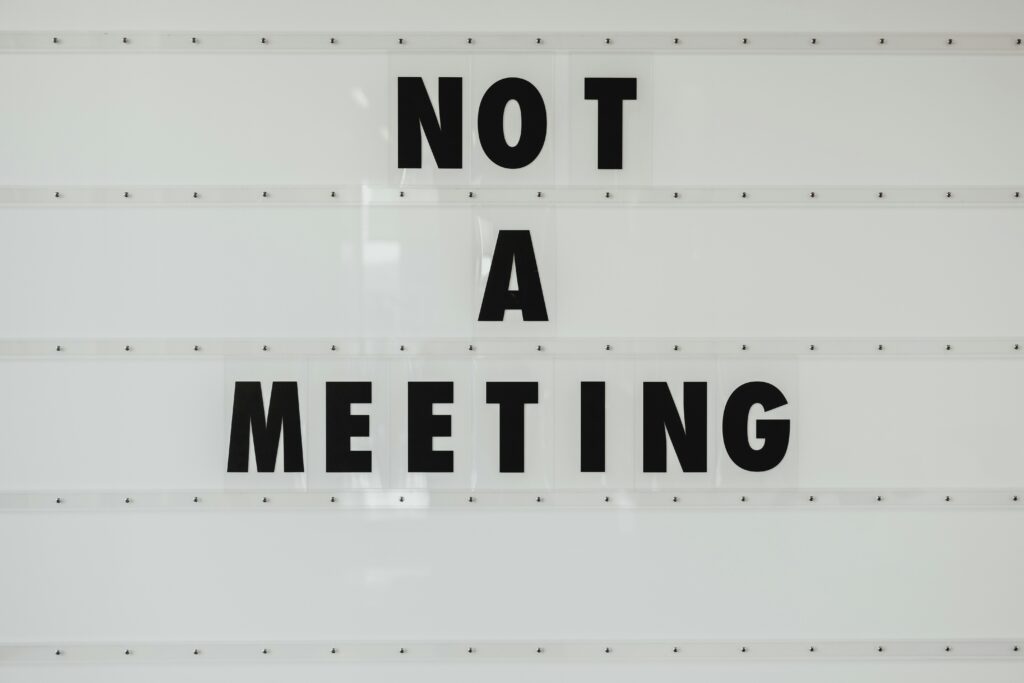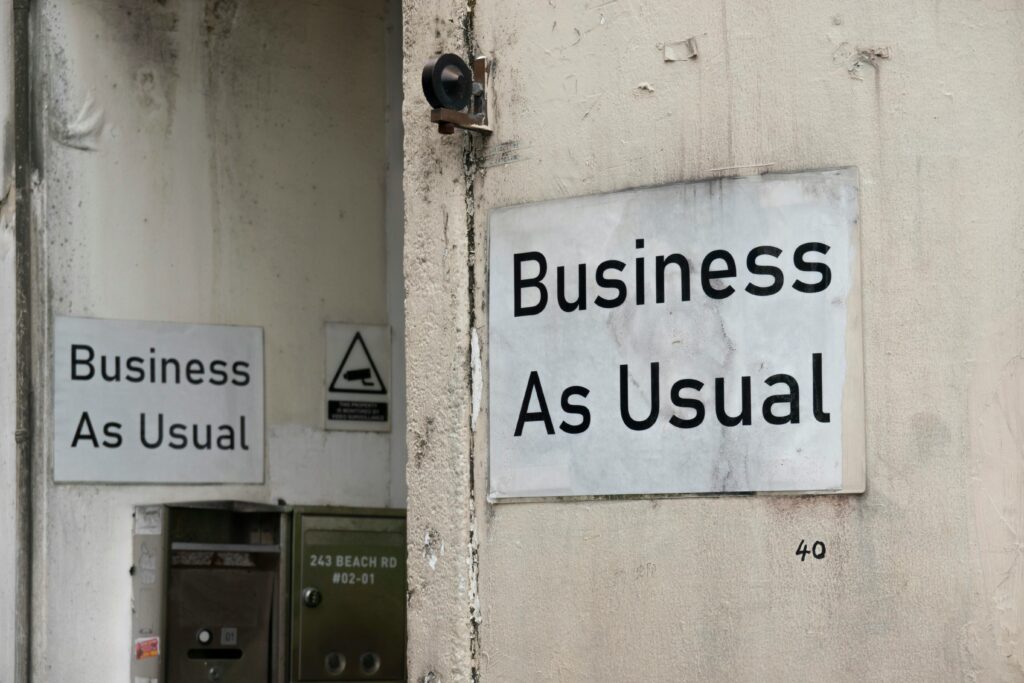
Why does everyone hate work meetings?
We take the hatred and meeting fatigue for granted, don’t we? It’s the basis of half the workplace memes on Instagram and three-quarters of the jokes in any decent office sitcom. The mere utterance of the cliche “a meeting that could’ve been an email” is guaranteed to earn a knowing nod from anyone who’s ever worn a lanyard or opened a Zoom invite.
Many of us have tried to fix it … mostly by rebranding; changing the language in hopes of changing the experience.
“It’s not a meeting – it’s a chat!” (A huddle. A regroup. A quick sync. A touchpoint. A round-up. A stand-up.)
But no matter what we call it, a badly run meeting is still a badly run meeting. If we’re gathering to restate what was in an email, read a dashboard aloud, or schedule yet another meeting … we’ve lost the plot.
Why We Hate Them (sometimes with good reason)
- They eat up time and rarely give it back
- They lack purpose, structure, or clarity
- They exist because “we always have a Thursday check-in”
- They drift, spiral, or become low-key turf wars
- They replace actual progress with performative presence
No one hates a meeting that solves a problem or serves a purpose. What we hate are the ones that fill time not needs – and somehow spawn three more meetings in their wake.
But Meetings Still Matter
But – and this is important – even bad meetings can still serve a purpose. A good purpose. Meetings anchor a team and align a group. They give people a place to read the room, voice concern, ask for help, or just feel slightly less alone in the workplace.
Even a five-minute check-in can make a difference when the alternative is sending messages into the void and hoping someone’s paying attention. Humans are relational. Even at work. Especially at work.
Meetings (when done right) are the connective tissue of a team. They give us rhythm, an opportunity to reset, and sometimes a place to laugh at someone’s dog getting the zoomies just slightly off camera.
But we can still improve our meetings. Think about:
- Being honest about what it is. If it’s an info dump, send it in writing. If it’s a brainstorm, label it that way. If it’s just to touch base, ask if an update in a Teams Channel would suffice.
- Defaulting to less. Fewer people. Less time. Minimal handouts. The more you constrain the shape, the sharper the purpose becomes.
- Starting and ending with clarity. What are we here to do? What decisions must we make? What’s next?
- Making space for real connection. Leave a little room for human moments and connecting. Not “forced” fun and games. Just humanity.
I’m sure we’ll keep calling them syncs and stand-ups and round-ups. I have a standing Monday meeting with a colleague that I’ve labeled “Hullabaloo” in our calendars, and I have no desire to change the name.
But maybe what matters isn’t the name. It’s whether we respect the time, the purpose, and the people in the room.
Call it whatever you want. Just don’t make it pointless.
*****



